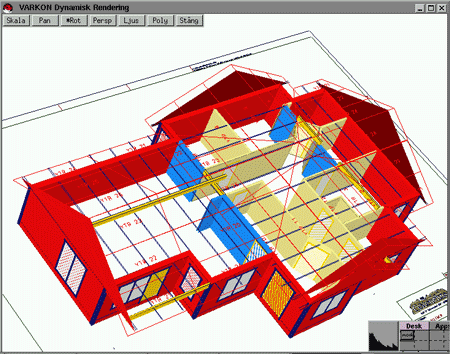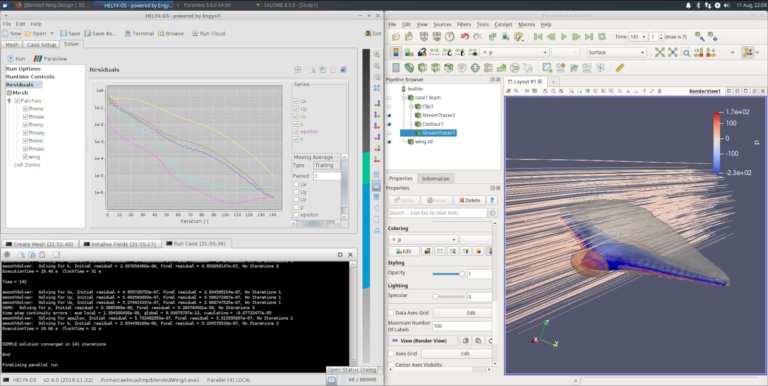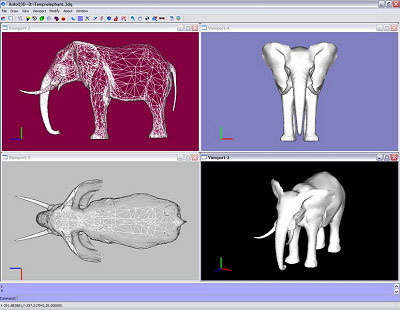Computer Aided Drafting (CAD) software has as its main advantage the increase in productivity at the time of modeling, but it is also well known that one of its main disadvantages is the high price of these products, which makes the licenses of use accessible practically only to companies.
Free CAD applications
Fortunately, in recent times we are experiencing a growth in Free software and this opens a deck of several good alternatives, such as the 10 listed below:
- FreeCAD: This is a powerful 3D modeling program for engineering and product design. It offers a wide range of tools for creating and editing complex 3D objects.
Web: https://www.freecadweb.org/
License: GNU General Public License v2 - LibreCAD: Is an open source 2D computer-aided design (CAD) software. It offers an easy-to-use user interface and accurate drawing tools.
Web: https://librecad.org/
License: GNU General Public License v2 - OpenSCAD: Is a 3D modeling software for the creation of script-based constructive solids. It is ideal for designers who prefer to work with code rather than a graphical interface.
Web: https://www.openscad.org/
License: GNU General Public License v2 - Blender: It is a complete 3D creation software that includes modeling, animation, rendering, compositing and video editing. It is widely used in the animation and gaming industry.
Web: https://www.blender.org/
License: GNU General Public License v2 - QCAD: Is an open source, cross-platform 2D computer-aided design (CAD) software. It offers accurate drawing tools and an easy-to-use user interface.
Web: https://qcad.org/
License: GNU General Public License v2 - SolveSpace: An open source, cross-platform 3D computer-aided design (CAD) software. It offers parametric modeling tools and is ideal for mechanical designers.
Web: https://solvespace.org/
License: GNU General Public License v3 - KiCad EDA: Is an open source, cross-platform printed circuit board (PCB) design software. It offers schematic design and PCB routing tools.
Web: https://kicad.org/
License: GNU General Public License v3 - gCAD3D: Is an open source, cross-platform 3D computer-aided design (CAD) software. It offers solid and surface modeling tools.
Web: http://gcad3d.org/
License: GNU General Public License v2 - BRL-CAD: Is an open source, cross-platform building solids modeling and analysis system. It provides tools for modeling and analysis of constructive solids and is used in engineering and science applications.
Web: https://brlcad.org/
License: GNU General Public License v2 - HeeksCAD: Is an open source, cross-platform 3D computer-aided design (CAD) software. It offers solid modeling tools and is ideal for mechanical designers.
Web: http://heekscad.net/
License: GNU General Public License v2
Advantages of free CAD applications
- Cost savings: Free CAD applications are free, which can help reduce software acquisition and licensing costs.
- Accessibility: Free applications are available for download and use anytime, anywhere, making it easy to access and collaborate on projects.
- Active community: Many of these applications have an active community of users and developers who contribute resources, tutorials and technical support.
- Customization: Free CAD applications are also open source, which means they can be customized and modified to suit a user’s or company’s specific needs.
- Regular updates: Most tend to have regular updates and continuous improvements thanks to the contribution of the user and developer community.
- File format support: By not trying to lock users into their market, these solutions typically support a variety of file formats, making it easy to collaborate and share files with other users and applications.
- Wide range of functionality: While free CAD applications may not have ALL the advanced functionality of commercial CAD suites, they typically offer a wide range of basic tools and functionality to meet the needs of most users. They are also often extensible through plugins or forks.
- Learning and experimentation: From a didactic point of view they can be a good option for those who want to learn about CAD or experiment with different tools and functionalities before investing in a commercial CAD suite.
How many of them have you tried?



